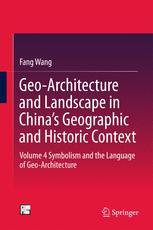

Most ebook files are in PDF format, so you can easily read them using various software such as Foxit Reader or directly on the Google Chrome browser.
Some ebook files are released by publishers in other formats such as .awz, .mobi, .epub, .fb2, etc. You may need to install specific software to read these formats on mobile/PC, such as Calibre.
Please read the tutorial at this link: https://ebookbell.com/faq
We offer FREE conversion to the popular formats you request; however, this may take some time. Therefore, right after payment, please email us, and we will try to provide the service as quickly as possible.
For some exceptional file formats or broken links (if any), please refrain from opening any disputes. Instead, email us first, and we will try to assist within a maximum of 6 hours.
EbookBell Team

4.1
30 reviewsThis book approaches the concept of geo-architecture by analyzing the symbolic characters of architectures. It proves that the relationship between architecture and geography is not merely an embodiment of physical and functional demands but rather a formal expression of the materialization of culture. After analyzing the vast number of villages, groups of buildings and individual buildings the forms of which closely resemble the forms of the Bagua (symbol of the Eight Trigrams), Taichi, animals and plants, this book finds that this kind of symbolism creatively places living and working places within the natural geographic environment and, by seeking a relationship between architecture and its surrounding environment, comes to express people’s hopes and dreams, evolving slowly to take on certain cultural connotations. This book is the fourth of a 4-volume book series. The series develops the innovative concept of “geo-architecture” by exploring the myriad influences of natural, human and historical factors upon architecture. These influences are considered in three categories, namely, interaction between architecture and nature, interaction between architecture and its human users and change in architecture over time--each category serves as a lens. Augmenting these lenses is the Time-Person-Place concept applied different geographic. The analysis ultimately focuses on two aspects: geographic influence on architecture and architectural response to geography. The over 1000 pictures of case architectures enriches the study with stunning and unique visual angles.
"This unprecedented work will be a unique and valuable contribution to the literature. Integrating as it does the disciplines of architecture, landscape architecture, and geography, Wang Fang’s voice is original, compelling, and will be much appreciated by English-speaking readers (and inside China, too, I can only imagine.)"Stephen M Ervin Assistant Dean Graduate School of Design, Harvard University July 2nd, 2013
"One reason for why there would be interest is because her research would fill some significant gaps in the literature.What is novel about Dr. Wang’s series is that she further extends this intellectual project of looking at Chinese architecture through Chinese eyes, by taking it one provocative step further."Annette M. Kim Associate Professor Department of Urban Studies and Planning, M.I.T. July 1st, 2013